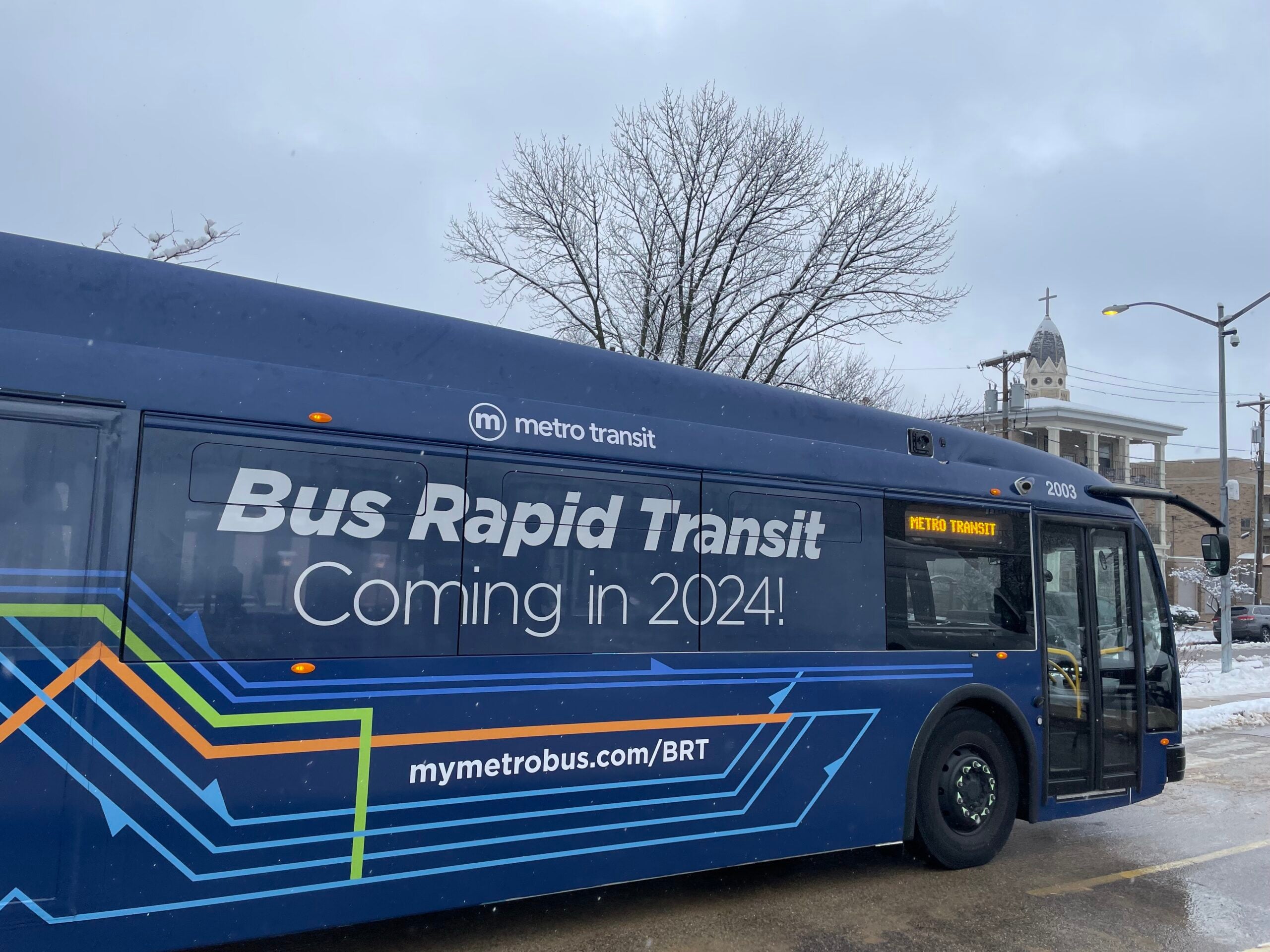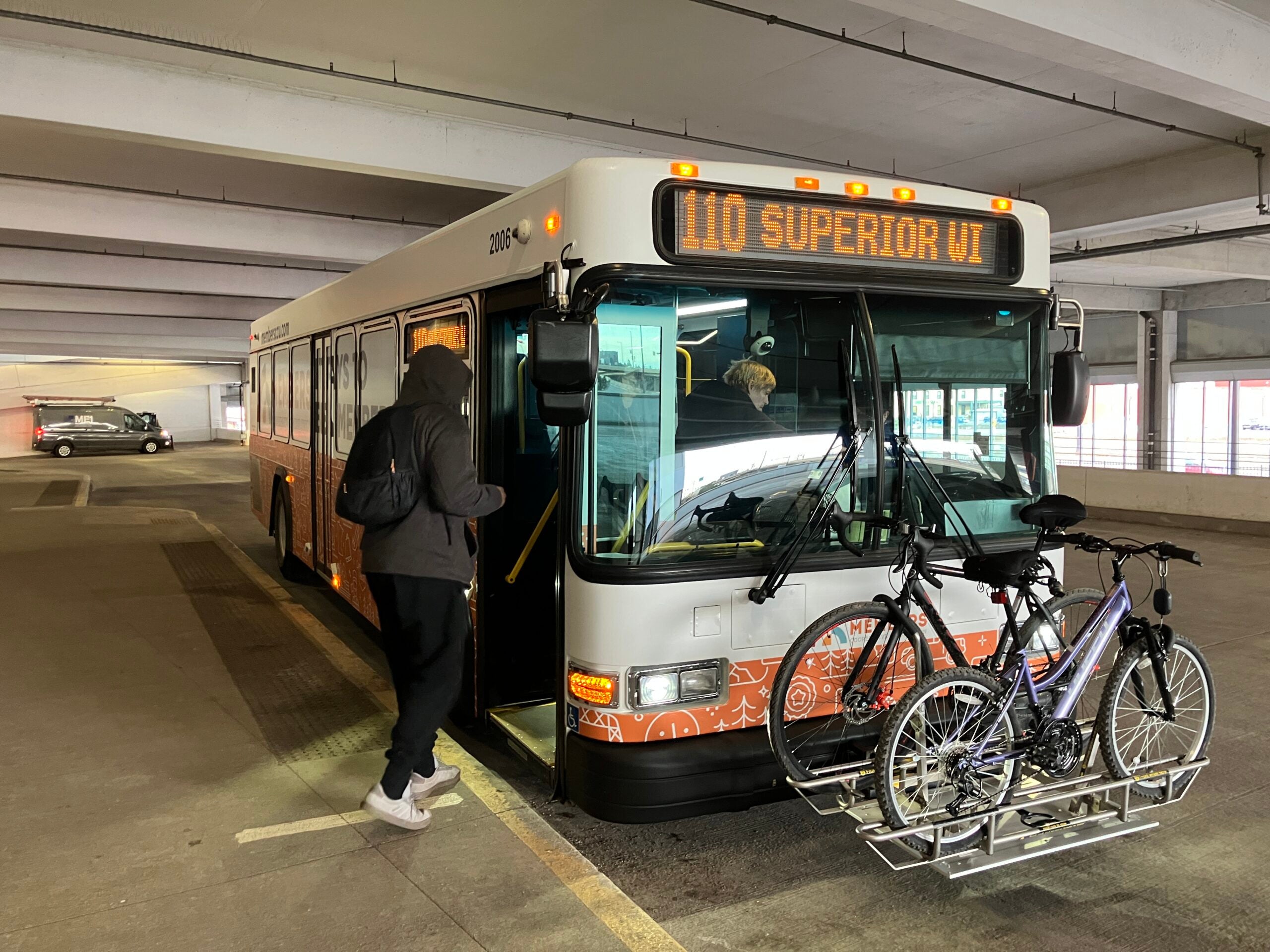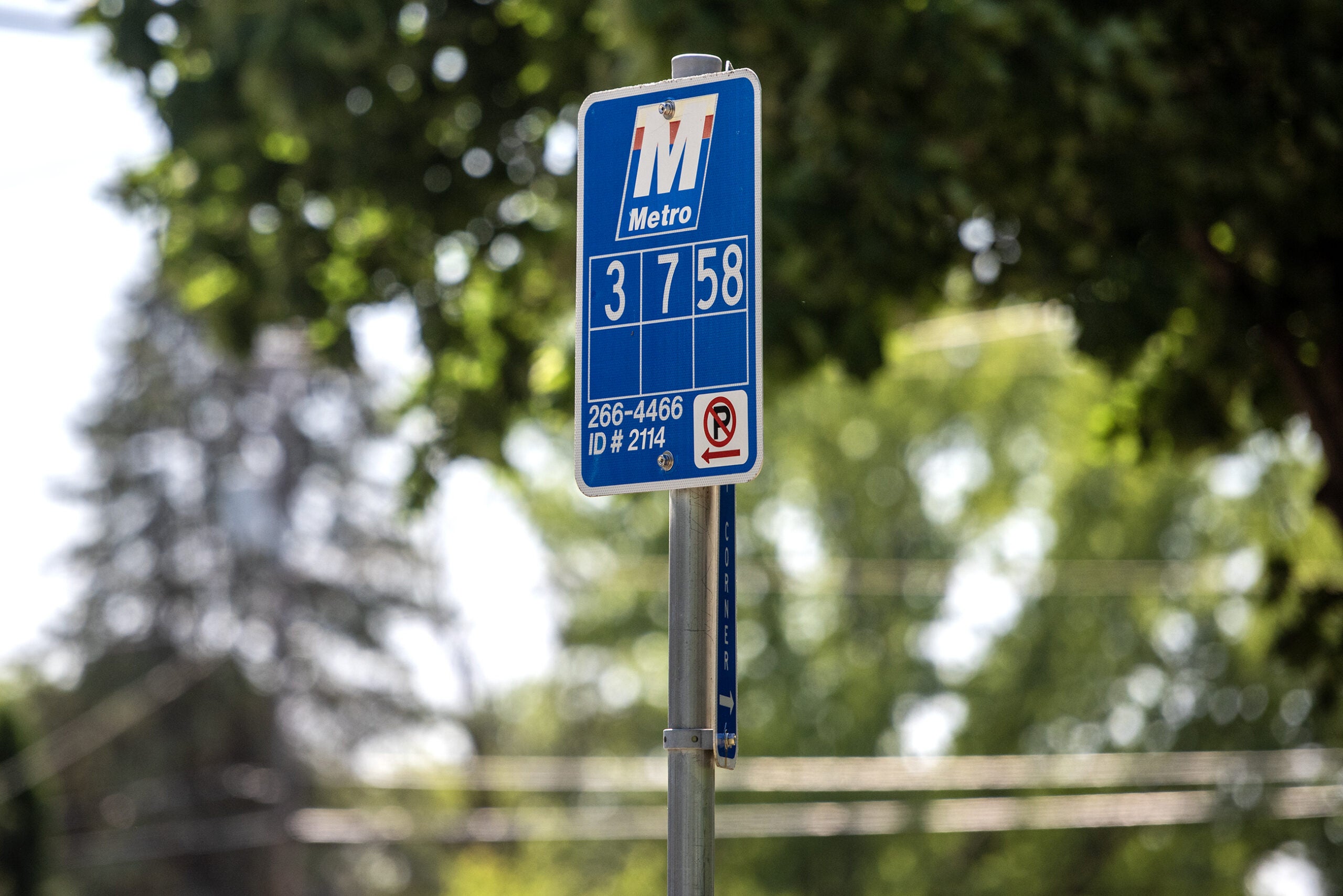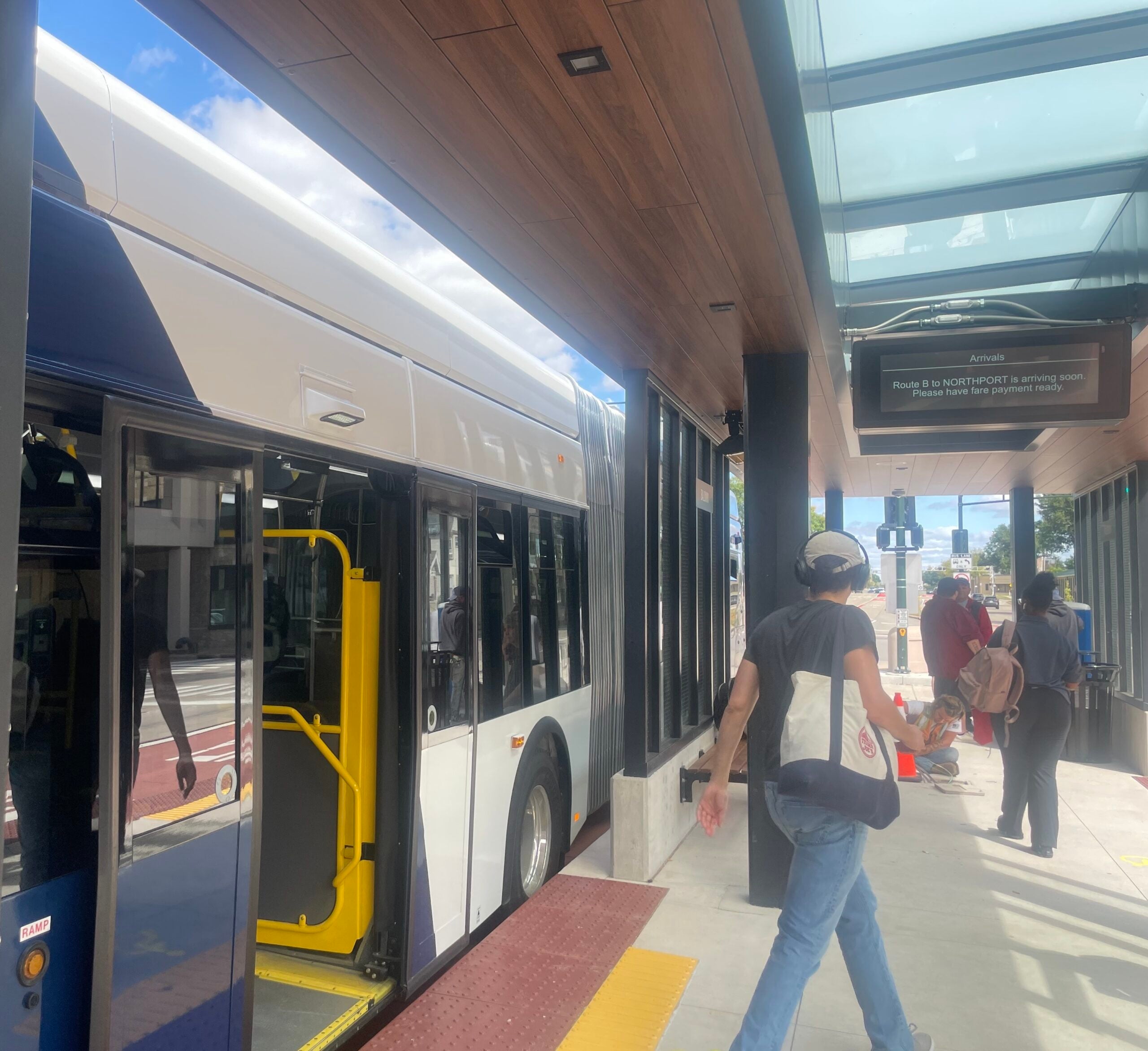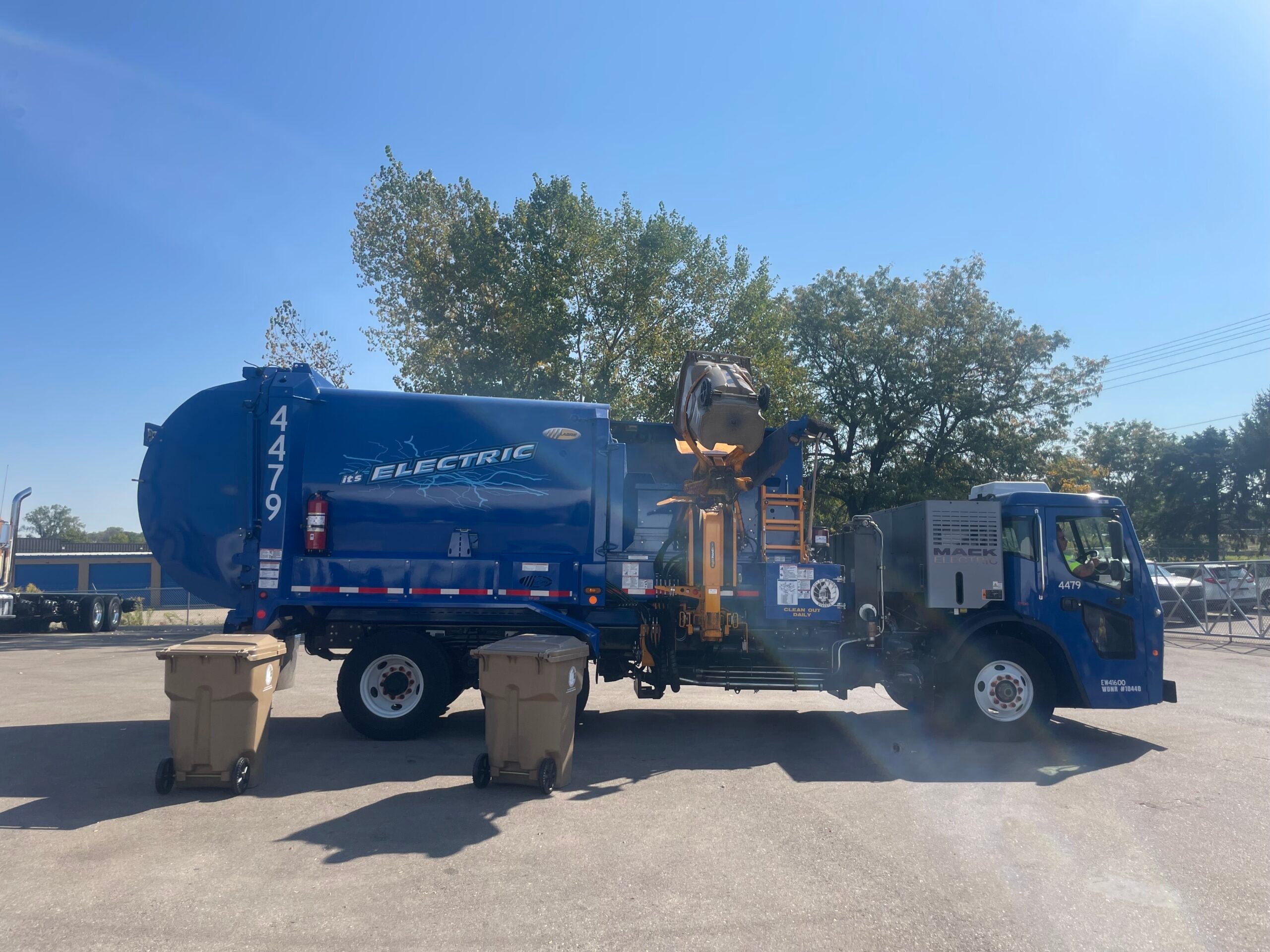Fewer stops and shorter commutes could be in store for Madison bus riders by 2025, as plans for bus rapid transit roll ahead.
Compared to Madison’s existing city buses, the system known as bus rapid transit will have a more consolidated route. The electric BRT buses will drive in dedicated lanes and passengers will pay before boarding at soon-to-be-built stations.
The result will be faster trips on high-frequency paths, Mayor Satya Rhodes-Conway said Thursday at a downtown groundbreaking ceremony for the project.
Stay informed on the latest news
Sign up for WPR’s email newsletter.
Roadwork, including fixes to curbs at East Washington Avenue, is already underway, and construction of bus rapid transit stations is set to begin in spring 2023, Madison’s transportation director Tom Lynch said.
The project will begin with an East-West route, which city leaders hope will be online by late 2024. A proposed map shows a path that cuts through the Capitol city’s downtown and the University of Wisconsin-Madison campus while running from an area near East Towne Mall all the way to West Towne Mall.
Eventually, city leaders hope to add a North-South route, as well.
Federal grants are expected to cover about 72 percent of estimated start-up costs, which could range from $190 million to $200 million, Lynch said. Local funding sources will make up most of the rest. Fares charged for BRT will be comparable to those for local bus routes, according to the city’s website.
Earlier this year, Madison’s Common Council approved a redesign of existing Metro bus routes, which are expected to eventually complement the bus rapid transit system.
Rhodes-Conway said plans for a more rapid transit system in Madison date as far back as the 1990s, when the city studied the possibility of light rail.
“It’s been 30 years that Madison has been pursuing rapid transit,” the mayor said while flanked by dignitaries, including Gov. Tony Evers.
A more efficient bus system, Rhodes-Conway said, will be necessary to accommodate a continued influx of residents and jobs. Madison is Wisconsin’s fastest-growing city, with a population that increased by nearly 16 percent between the 2010 and 2020 U.S. Census.
“The East-West BRT line brings Madison into a league with other cities and regions that we regularly compete with for both jobs and people,” Rhodes-Conway said.
In southeast Wisconsin, Milwaukee County is also working to implement bus rapid transit, although supply chain issues have delayed the rollout.
Wisconsin Public Radio, © Copyright 2025, Board of Regents of the University of Wisconsin System and Wisconsin Educational Communications Board.
